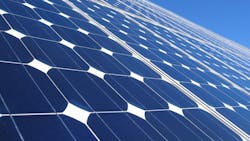PV Solar Dilemma: Energy Cannibalism Meets Energy Accounting
I wrote this article in January, 2013 on another site. We got a good response from readers and not much has changed so I thought I'd offer it to Grid Op readers. Tomatoes, rotten eggs and other comments are all welcome!
We’ve become somewhat familiar with accounting terms such as ROI, OPEX, CAPEX, and even “Free Cash Flow” (I said ‘somewhat familiar’). But, with the increasing focus on greenhouse gas emissions and clean, green resources, we’re going to hear more about ‘energy accounting’, particularly Energy Return on Investment or EROI.
These are going to be some big rocks tossed into the muddy but bland waters of electric utility finance.
Most folks know that Return on Investment, ROI, is the ratio of financial return to financial investment. They may not know how ROI applies to the utility industry but they do know that, in general, when it comes to ROI, bigger is better. EROI is a similar ratio – sort of energy out divided by energy in.
When applied to a generation resource, EROI is the ratio of the usable acquired energy (say, the lifetime output of a wind turbine) divided by the total energy required to build and maintain that resource (the energy that went into manufacturing and constructing the turbine and supporting T&D infrastructure and logistics).
Energy Accounting (EA) principles such as EROI aren’t new. Back in the early 1970’s there was a flurry of publications on EA. Most of these studies were products of the fledgling environmental movement as it warned that we were using up energy sources and natural materials at an unsustainable rate.
The point being that financial performance may be optimized by ‘free market’ monetary forces but in the meantime mother earth was going to heck in a hand basket. At that time nuclear generation was the villain du jour. Of course, nowadays it’s fossil fuels and the resulting carbon emissions.
As you would expect during those days, the topics of EA and EROI were pretty much ignored by the energy industry, except for maybe a few chuckles in the boardroom. However, the underlying concept of energy investment and return lives on. It’s even beginning to haunt the same promoters of green technology who gave it birth.
For example, the resurrection of EROI has spun off another concept with a more colorful name. Energy cannibalism refers to the effect of a new energy resource industry, such as wind and solar, growing so fast that it uses up (cannibalizes) large amounts of the output of existing conventional (mostly fossil) generating plants.
So, during a period of high growth, such as now, the new resource (which may itself be completely pollution free) can actually increase greenhouse gas emission while producing no net energy.
Even worse, a positive, unstable feedback loop may form: the more emissions, the more the push to build clean generation resources. In turn, the demand from conventional generation goes up and so do the emissions.
So, who’s watching the shop to make sure the nation progresses in the right direction at the right pace? Unfortunately, the watchdogs are our elected politicians, many of whom probably couldn’t explain how a toaster works.
But eventually don’t we come out ahead?
Not necessarily. Take PV solar. A study of Spain’s utility scale PV experience calculated the PV solar EROI to be so low as to be not worth the effort.
Other studies show the average estimate for solar PV EROI to be around 5. That means that for every 5 kilowatt-hours produced by, say, a PV panel, you had to provide 1 kilowatt-hour of conventional power. The estimated EROI for wind varies from 5 to 33 with an average of about 18.
To make things worse, in the last few years the financial ROI of PV solar has been sharply increased by using cheaper, less efficient panels from Asia.
However, that move greatly decreased the expected EROI because the panels require about the same energy to make but, because of the low efficiency, they will have much less lifetime energy output than a more efficient PV technology.
Ironically, since the Asian (primarily Chinese) energy supply is mostly coal, the cheaper panels also result in greater greenhouse gas emissions.
Because of the energy resource mix, higher efficiency U.S. made panels would be more expensive (having a lower ROI) but would have resulted in less carbon emission. So, beleaguered Solyndra, with its highly efficient, innovative thin film technology, was a winner based on EROI but got shot down by its unattractive ROI.
Muddy enough for you? The bottom line is which will be the driver for resource planning: ROI or EROI? My guess it will be ROI greased by politics and ignorance, hands down.
As the saying goes, money talks, everything else walks.
About the Author
Paul Mauldin Blog
Managing Editor, Grid Optimization Center of Excellence
Paul earned his B.S. and an M.S. in electrical engineering from the University of California-Berkeley and is a registered professional engineer. He has worked in the energy industry for more than 25 years, developing and implementing advanced energy technologies. As research director for Pacific Gas and Electric Co. he pioneered methodologies used in the design, maintenance and control of energy delivery systems.
As Manager, PG&E New Business Opportunities (Unregulated Enterprise), Paul led a worldwide evaluation of gas and electric technologies and markets and provided due diligence for equity investments. As a consultant he provided guidance to utilities and the vendor community, nationally and internationally.
Paul has led a number of initiatives at Transmission and Distribution World, including special supplements, webinars, podcasts, and website development.
